Ahmedabad is a city rich in heritage, culture and vibrancy. Every place that is of tourist interest in Ahmedabad is steeped in some historical importance or the other. Going through the streets and bylanes of Ahmedabad, people can have a wholesome travel experience. From exploring the history of Gujarat through museums to having a spiritual experience and ending the day by watching the sun go down at the lake, a visit to Ahmedabad will definitely be a soul enriching experience. Here are the top 20 best places to visit in Ahmedabad to include in your next trip to Gujarat:
List of the 20 Best Places to Visit near me in Ahmedabad
1. Sabarmati Ashram
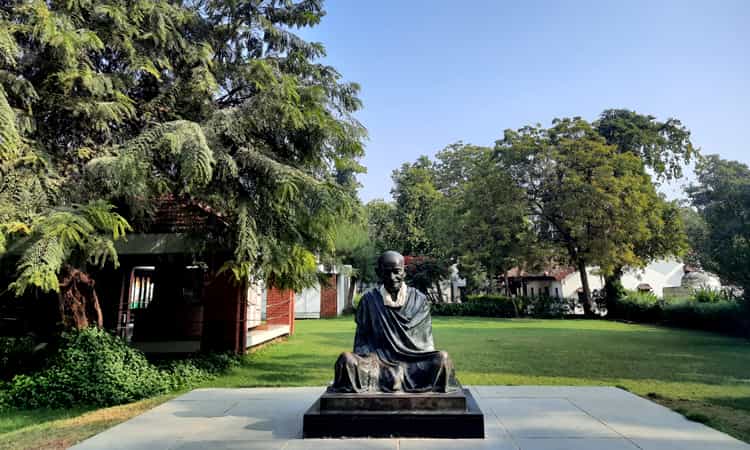
Sabarmati Ashram or also known as Mahatma Gandhi Ashram, is one of the most iconic places to visit in Gujarat. While looking for a place to settle, Gandhi chose this haven, next to Sabarmati River and very close to rishi Dadheechi’s Temple as well as a crematorium. He described the choice of location for his ashram to be perfect. The ashram activities commenced in 1917 and it was also the starting point for the iconic Dandi March. Later on post-independence and after his passing, a museum commemorating the contribution of Gandhiji was established in the ashram during 1951. It contains books, manuscripts, writing relics, spinning wheels, life size oil paintings and more.
2. Kankaria Lake
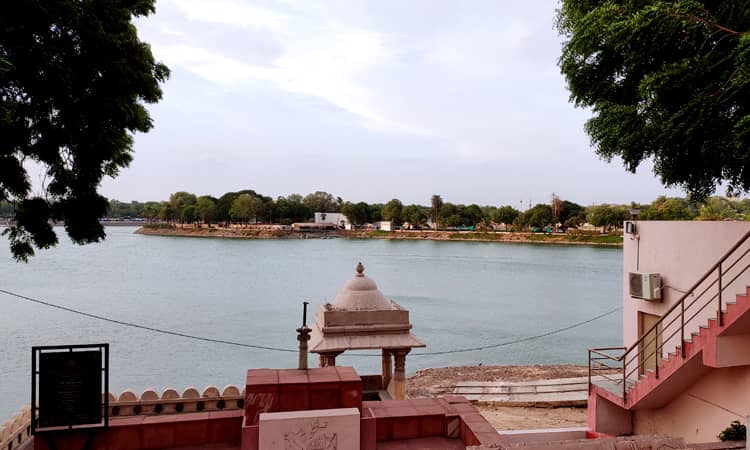
Situated in Ahmedabad, Kankaria Lake is the 2nd largest lake in the city. It is a major tourist and locals hubspot for indulging in various activities such as hot air balloon rides, toy train rides and even a zoo! This is a must visit palace with the kids where you can even indulge in some light water based activities. The lake-front was developed by the Ahmedabad Municipal Corporation and it is a major place for various cultural events as well as sound and light show. The lake serves as the perfect stage of the carnival festival that takes place on its shores annually in December.
3. Statue of Unity
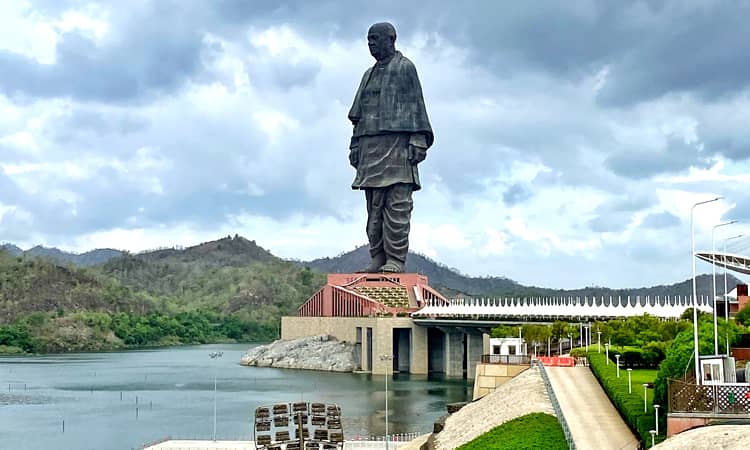
Statue of Unity is the tallest statue in the world. Dedicated to the iron man of India, Sardar Vallabhbhai Patel, the statue is a way of honouring the late deputy prime minister and his contributions made towards unifying India in one. Initially the subcontinent was divided into 562 princely states until he went and unified all of them into the republic of India. The statue is 597 feet tall, almost double the height of the Statue of Liberty in the USA and overlooks the Narmada river and the Sardar Sarovar Dam.
4. Swaminarayan Temple
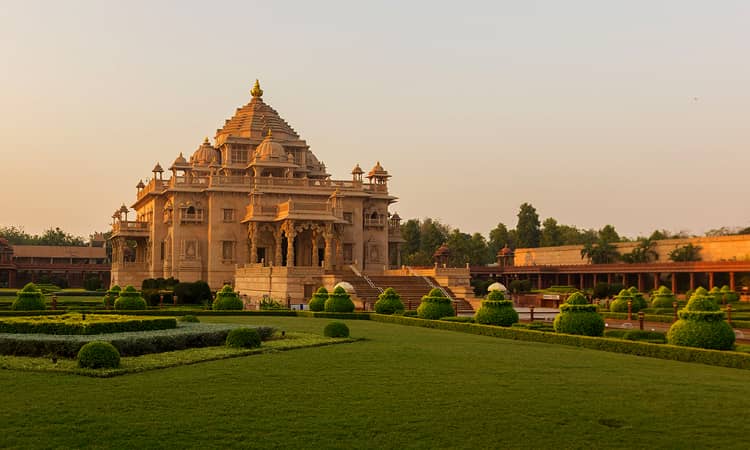
The Swaminarayan Temple of Ahmedabad is the first temple in the Swaminarayan Sampraday which is a Hindu sect. Situated in the Kalupur area of the city, the temple was built after following the instructions given by Swaminarayan himself, who is also the founder of the sect. The primary deities of the temple are Nar Narayan Dev, Radha Krishna Dev, Dharma Bhakti Mata and Hari Krushna Maharaj, Bal Swarup Ghanshyam Maharaj and Rangmahol Ghanshyam Maharaj. The temple architecture is extremely designer and intricately constructed keeping in mind the Indian temple aesthetics.
5. Rani Ki Vav
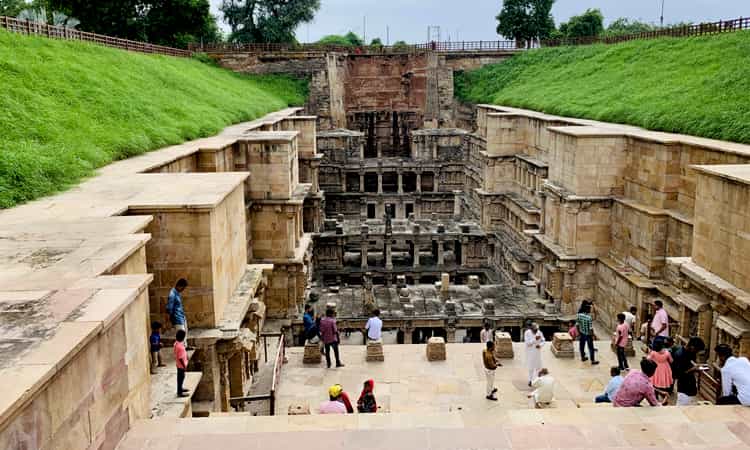
Gujarat is known for its Stepwells, Rani Ki Vav being one of the most iconic ones. Literally translating into the Queen’s Stepwell, Rani Ki Vav is situated in the Patan town of Gujarat. Built during the 11th century by the daughter of Khengara in Saurashtra, queen and spouse of the Chalukya king Bhima1 and rediscovered during the 1940s, this ancient Stepwell is also a UNESCO world heritage site. It is one of the most iconic remnants of the past architecture along with being incredibly useful for various purposes. The Stepwell has 7 levels, each of which is intricately carved out and beautifully adorned, decorated and sculpted out.
6. Adalaj Stepwell
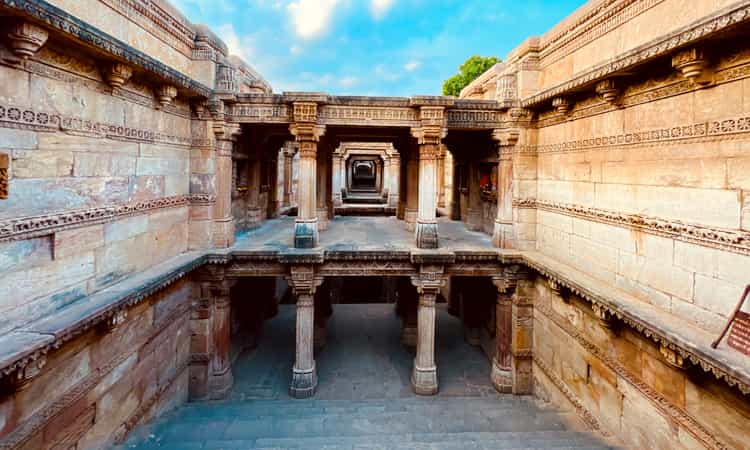
Situated in the village of Adalaj in Gandhinagar, Adalaj Stepwell is without a doubt one of the finest examples of architectural work. The Vav was built in 1498, commemorating the memory of Rana Veer Singh, by his wife, queen Rudadevi. The Stepwell in Adalaj, was built with the purpose of providing drinking, washing and bathing water for the people living in this region. The Stepwell was not only a place for getting water, but they were also the venues for celebrating colourful festivals, sacred rituals and various events. The Vav is 5 levels deep and built in Solanki style of architecture complete with intricately carved out pillars, walls and stairs.
7. Nalsarovar Bird Sanctuary
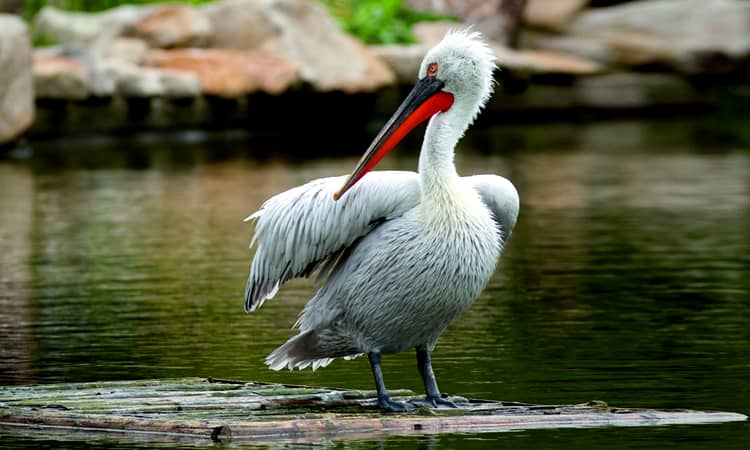
Spread out over an area of 121 sq. km. the Nalsarovar Bird Sanctuary is located at a comfortable driving distance of 64 kms from the main city of Ahmedabad. It is a treat for all bird watchers and nature enthusiasts. Declared a bird sanctuary in 1969, the ecosystem of this bird sanctuary is home to ambient marshes and wonderful lakes. Home to over 210 different species of birds, the sanctuary is also home to various mammalian species such as wild ass and blackbuck. One can set out for a wonderful bird-watching experience on boats, early in the morning.
8. Bhadra Fort
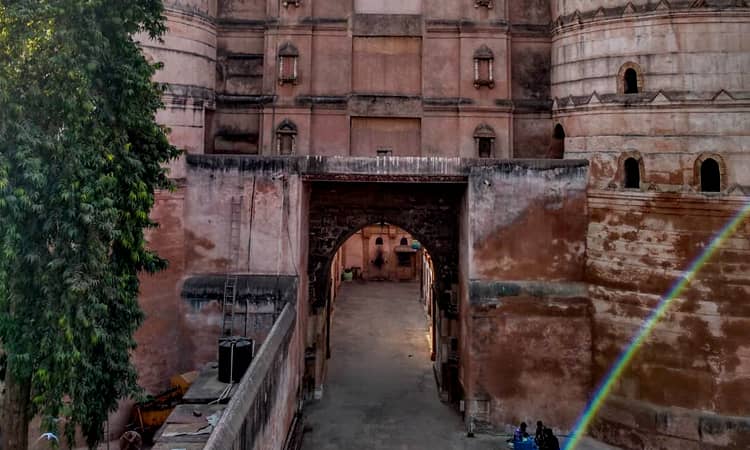
Built by Ahmad Shah 1 in 1411, Bhadra Fort is situated in the walled city area of Ahmedabad. The fort is renovated and maintained by the Archaeological survey of India. Due to its location on the eastern bank of the Sabarmati River, it offers stunning views. The fort gets its name from the temple of Bhadra Kali that was an important temple established by the Maratha rulers during that era, near the fort. It was also once known as arak fort, the fort complex spreads out over an area of 43 acres and consists of 162 houses, 12 gates and more.
9. Jama Masjid
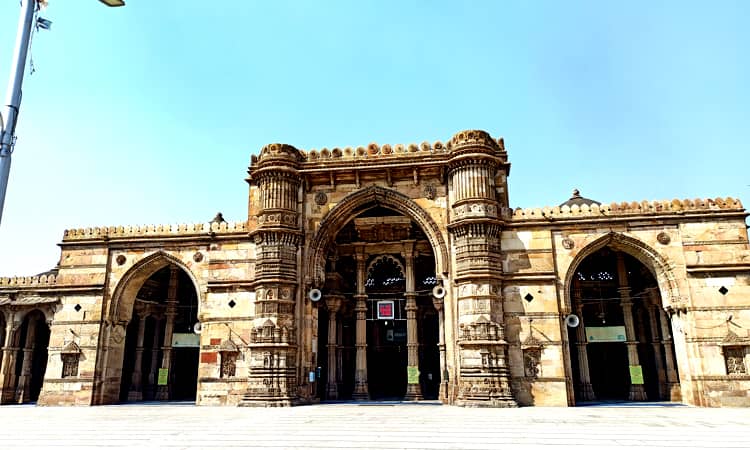
The Jama Masjid of Ahmedabad is also known as Jummah Mosque that was built by Ahmad shah 1 during 1424. Just situated outside of the Bhadra Fort, the Jama Masjid was the 5th mosque structure built during Ahmed shah 1’s reign. It contains a large and paved courtyard that can be entered from 3 different directions with the western end of the building containing a prayer hall. The mosque as a whole is a typical emblem of traditional Gujarati style of architecture. The Ahmedabad Jama masjid may have been the largest mosque in the Indian subcontinent as a whole during the period it was built.
10. Sarkhej Roza
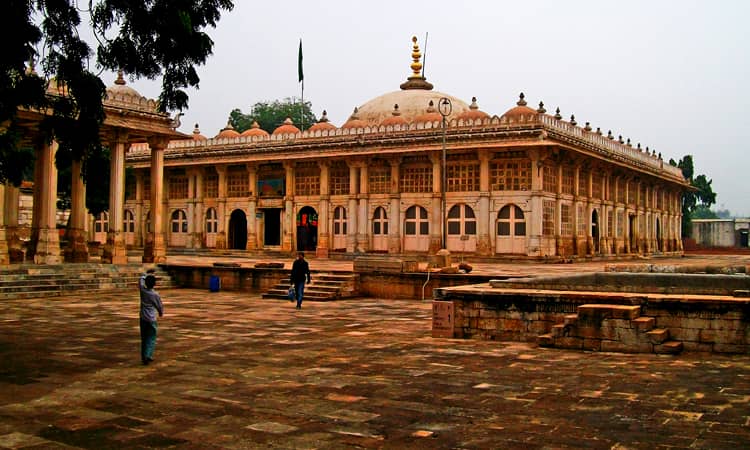
The tomb complex of Sarkhej Roza is also a mosque that is situated in the village of Makarba, 7 kms away from the main city of Ahmedabad in Gujarat. Gujarat is dotted with several Rozas of this kind, the Sarkhej Roza is the most highly revered one. Sarkhej was once a prominent centre for the development of the Sufi culture in the country. It had served as a residential place for prominent Sufi saints such as Shaikh Ahmad Ganj Baksh. Originally spread out over an area of 72 acres, the Roza is surrounded by gardens on all sides.
11. Rani No Hajiro
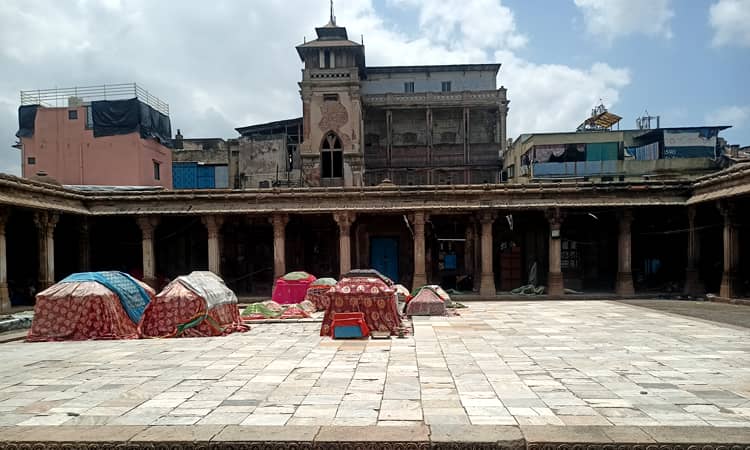
Rani No Hajiro is also known as Mughlai Bibi’s Tomb or the tombs of Ahmed shah’s queens. The temple complex is located close to Manek Chowk in Ahmedabad. The enclosure is located high above the ground. It can be entered via a lofty gateway. According to written records, this structure was built in 1445, and displays elaborate designs. The main tomb belongs to Mughlai Bibi. The adjacent tomb belongs to the wife of shah e Alam. The area surrounding the complex is now a marketplace selling women’s clothing, accessories and jewellery.
12. Vastrapur Lake
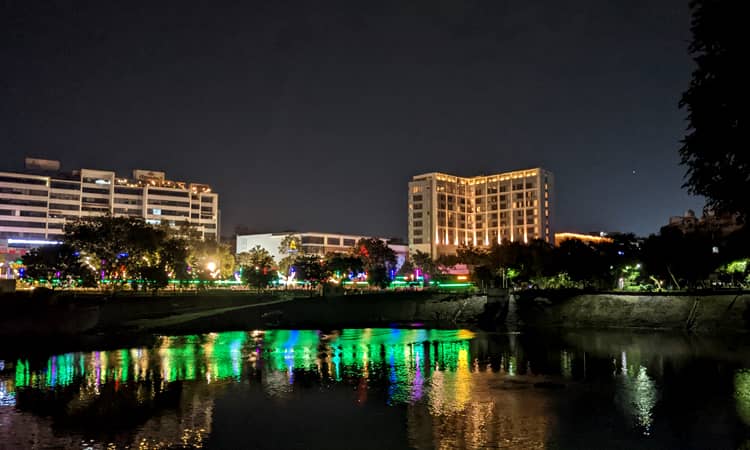
Vastrapur Lake is a quiet respite away from the chaos of the city of Ahmedabad. Located in the heart of the city, the lake is surrounded by lush, thick green cover. This includes gardens, lawns and trees. It is not only a quick getaway for not just the tourists but for the locals as well. There is a round boardwalk or a pathway that goes around the circumference of the lake. Opened for the public in 2002, the lake is a breath of fresh air amidst the city bustle.
13. Hutheesing Jain Temple
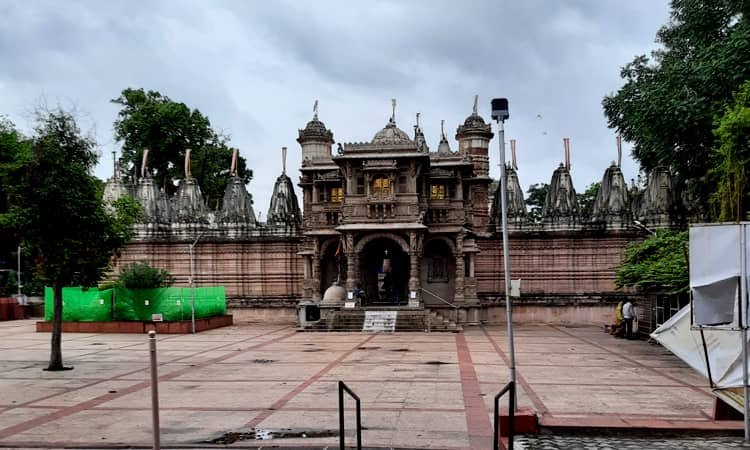
The Hutheesing Jain Temple in Ahmedabad was constructed in 1848 by the Hutheesing family. The temple architecture and design is a work of marvel. It represents the combination of Maru-Gurjara style of architecture that was developed in Gujarat. The temple was built by the wealthy trading family of Hutheesing. This Jain Temple has blended the old temple architecture style with several newer architectural elements of haveli. It displays highly decorated walls, intricately carved out pillars, balconies, Chabutras and Jalis.
14. Calico Museum of Textiles
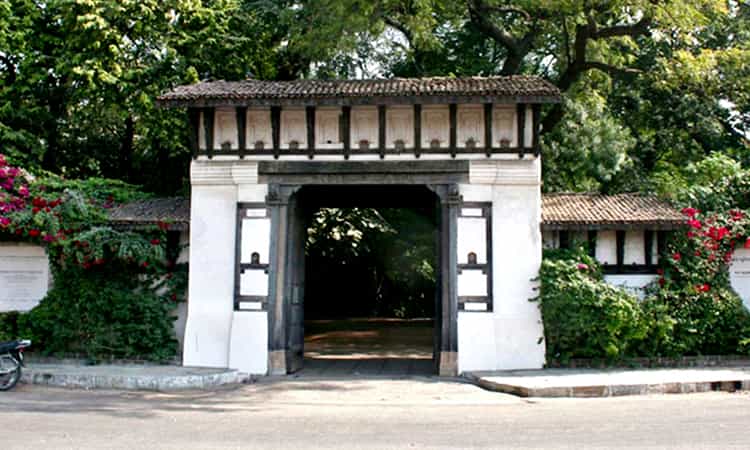
Managed by the Sarabhai foundation and located in the buzzing city of Ahmedabad, the Calico museum of textiles was founded in 1949. It commemorates the flourishing textile business that was going on in Ahmedabad as in the state during that time. The museum originally was housed in the famous Calico mills. As the collections of textiles grew in numbers, the museum was shifted to its current location in 1983. The textile collection displayed in the museum include court textiles used by the Mughals and other 15th and 19th century provincial rulers.
15. Modhera Sun Temple
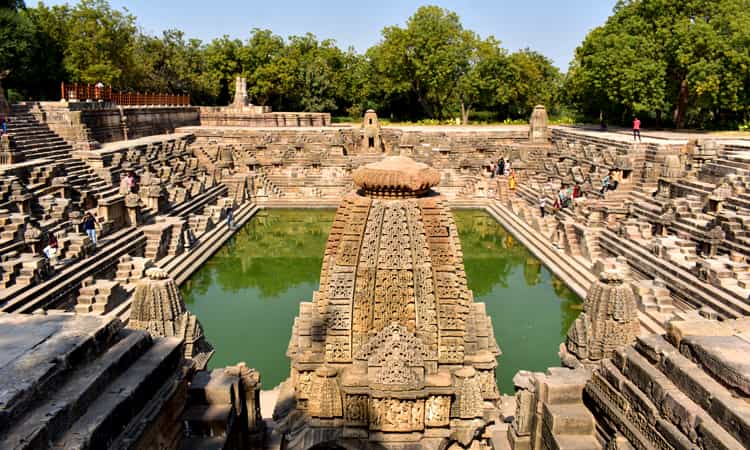
Situated 2 hours away from Ahmedabad, the Modhera Sun Temple is dedicated to the solar deity, Surya. The temple is located in the village of Modhera in the Mehsana district. Gracing the bank of river Pushpavati, the temple was built during the chalukya rule in the state. The temple is an architectural marvel in every sense. Previously a large gemstone was adorned in the middle of the crown of the presiding deity in the temple. The temple complex houses 108 small temples and is maintained by the archaeological survey of India.
16. Law Garden Night Market
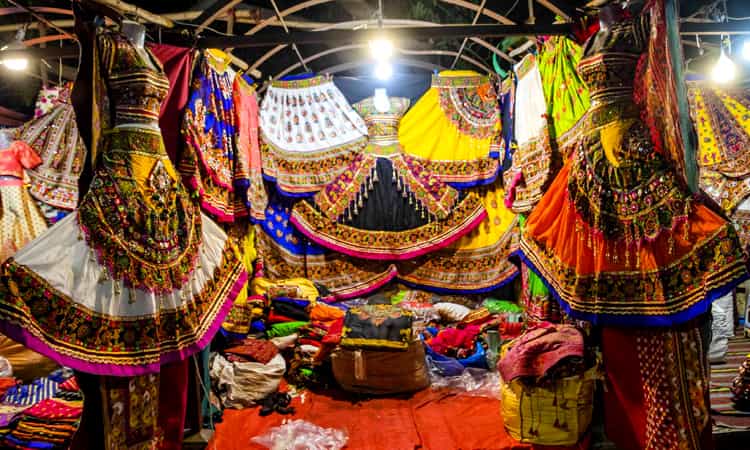
Situated at the Law garden in Maharaja Society, Ahmedabad, the law garden is a prominent night market in the state. This night market sells an array of authentic and traditional products from Kutch and Saurashtra regions. Locals and tourists visit this night market to shop for a variety of items such as clothing, decorative items, jewellery and more. The night market also displays an array of food trucks and stalls to beat hunger while shopping. It remains open from 7 pm to midnight.
17. Jhulta Minar
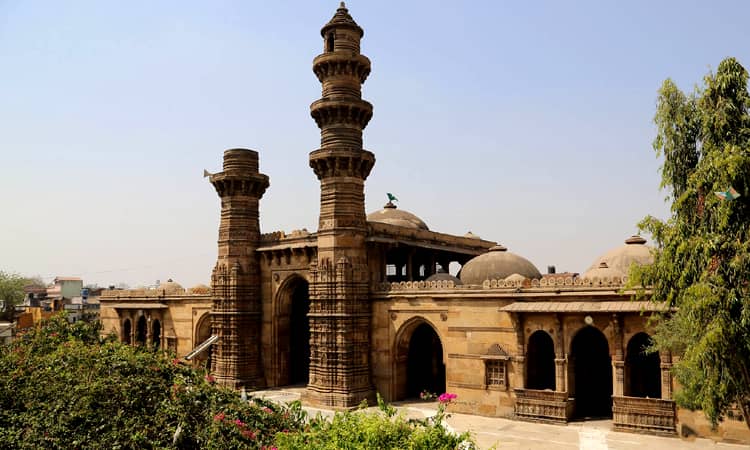
Jhulta Minar is one of the most intriguing and thought-provoking structures in the world. Also known as the shaking minarets, the cause for the vibration or shaking remains a mystery to the world. One of the Minar is located opposite to the Sarangpur Darwaja while the other one is located near Kalupur railway station area. Built-in 1452, by Sidi Bashir, these 3 storey tall towers are immaculately carved out with designs, shapes and iconography. Sadly, the demonstrations for vibration of the minars are stopped now as an attempt to preserve it.
18. Vaishno Devi Temple
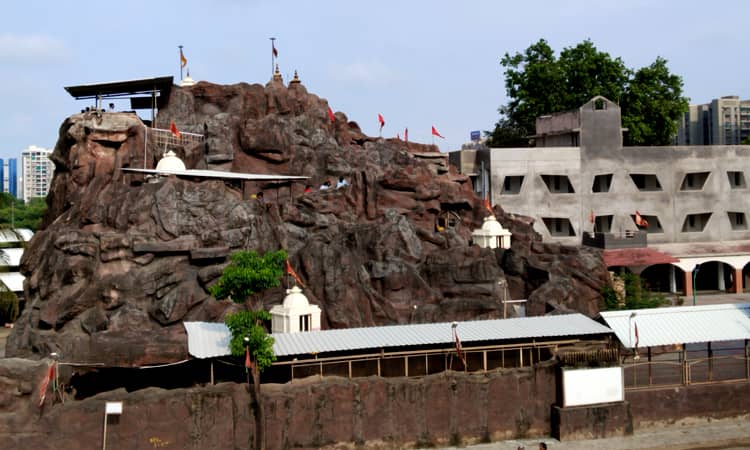
Not to be confused with the Vaishno Devi Temple of Katra, the Vaishno Devi Temple of Ahmedabad is a must visit. The temple is located on the Sarkhej Gandhinagar highway. It is a true and an accurate replica of the original Vaishno Devi Temple of Katra. The entire temple setup is man made out of sandstone in a circular shape. It is home to several beautiful carvings and sculptures of gods and goddesses. The pilgrims make their way through this man-made hill to the shrine located on top of the hill.
19. Lothal Archaeological Site
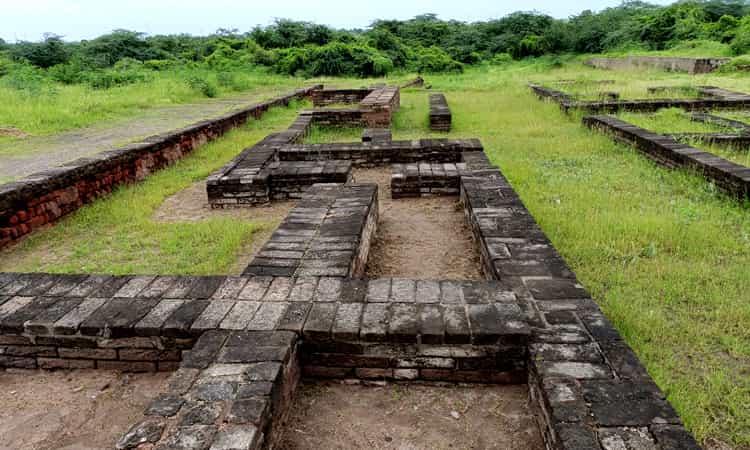
The archaeological site of Lothal is situated 1 hour and 45 minutes away from the main city of Ahmedabad. The site was discovered in 1954 and tells a detailed story about our rich Indus Valley civilization. The site is dated 4,500 years old and is also a UNESCO world heritage site. The excavations over time revealed the mountain of dockyards, canals, town planning and more. The Lothal site has successfully mapped the lifestyle and occupation of the ancient people. The museum present at the site tells a story about the past.
20. Kamla Nehru Zoo
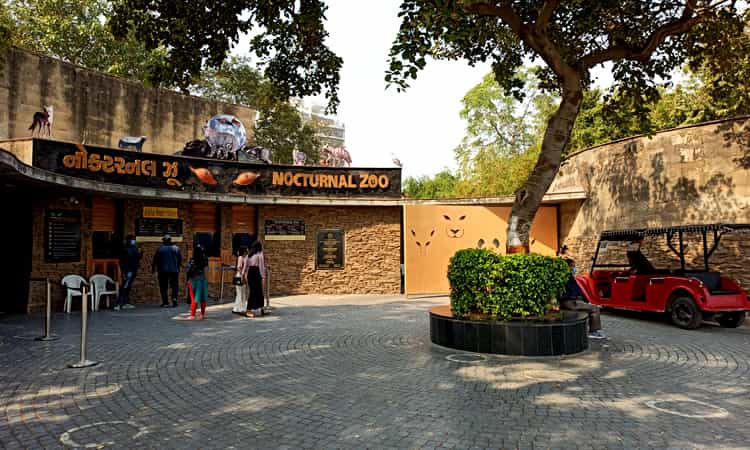
Established in 1951 by Rueben David, the Kamla Nehru Zoo covers an area of 21 acres. If you are travelling to Ahmedabad with kids and loved ones, this zoo is a must visit. Placed along the banks of the Kankaria Lake, the zoo is a breath of fresh air for every visitor. Home to over 2,000 types of birds and 450 types of animals, the zoo is a wonderful place to spend time in relaxation. The zoo area serves the dual purpose of retaining ecological balance.
Conclusions
Ahmedabad is steeped in a rich historical and mythological account that is bound together with a thread of geographical richness. Not just that one can shop till you drop in Ahmedabad. The old Ahmedabad city is also the first UNESCO world heritage site of India. Known for its rich history and spirituality, the city and its vicinity is blessed with some of the most interesting places to visit.
Frequently Asked Questions (FAQs)
Q. When Is The Best Time To Visit Ahmedabad?
Ans. The best time to visit Ahmedabad is from October to March.
Q. What Is Ahmedabad Famous For?
Ans. Ahmedabad is famous for its textiles collection.
Q. What Are The Famous Dishes Of Ahmedabad?
Ans. Famous dishes of Ahmedabad are: Khakhra, Fafda, Dhokla, Thepla, Dabeli, Sev, Farsan, Dalvada etc.
Q. Which Is The Hottest Month In Ahmedabad?
Ans. May is the hottest month in Ahmedabad.
Q. When Are The Coldest Months In Ahmedabad?
Ans. January and February are 2 of the coldest months in Ahmedabad.

